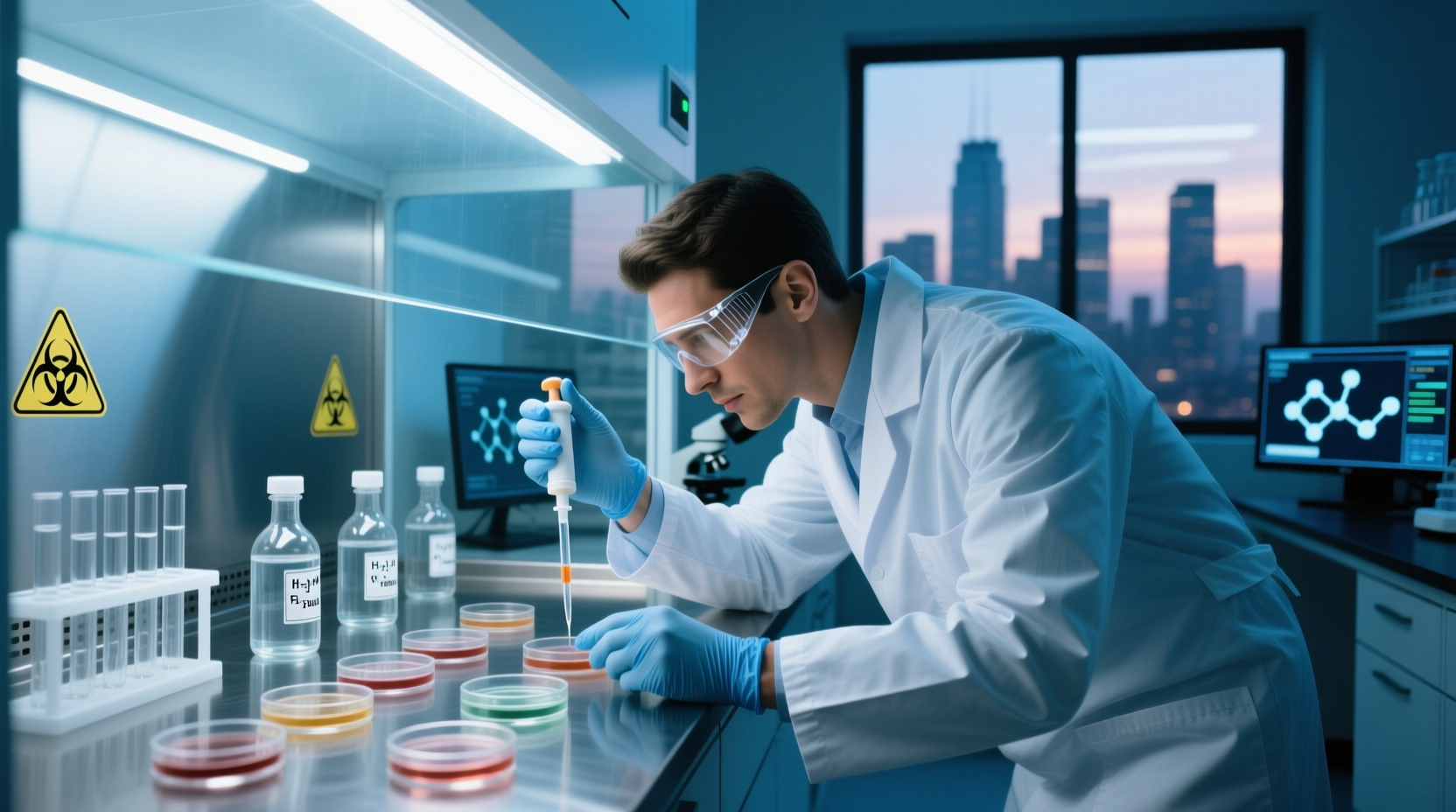Ever wondered how your favorite snacks maintain freshness for months or why certain foods pair perfectly together? Understanding what is food science reveals the intricate processes behind every bite we consume. This essential discipline combines chemistry, biology, and engineering to transform raw ingredients into safe, delicious, and nutritious products while addressing food security challenges affecting billions worldwide.
The Evolution of Food Science: From Preservation to Innovation
Food science emerged from humanity's earliest survival needs. Our ancestors developed rudimentary preservation techniques like drying and fermentation long before understanding the microbiological principles involved. The field gained scientific rigor in the 19th century when Louis Pasteur established the germ theory of fermentation and spoilage. The 20th century brought refrigeration breakthroughs, canning standardization, and nutritional fortification that dramatically reduced foodborne illnesses and malnutrition.
| Era | Key Developments | Impact |
|---|---|---|
| Pre-1800s | Natural preservation methods (drying, salting, fermentation) | Extended food availability through seasons |
| 1800-1900 | Pasteurization, canning technology, basic nutritional understanding | Reduced food spoilage and disease transmission |
| 1900-2000 | Refrigeration, food additives regulation, nutritional science advances | Year-round food availability, fortified products, safety standards |
| 2000-Present | Genetic modification, precision fermentation, sustainable packaging | Climate-resilient crops, alternative proteins, waste reduction |
This historical progression shows how food science definition has expanded from basic preservation to addressing complex global challenges like climate change adaptation and personalized nutrition.
Core Disciplines Within Food Science
Modern food science integrates multiple specialized fields working in concert:
- Food Chemistry: Analyzes molecular composition and reactions during processing
- Food Microbiology: Studies beneficial and harmful microorganisms in food systems
- Food Engineering: Designs equipment and processes for efficient production
- Sensory Science: Measures human responses to food appearance, texture, and flavor
- Food Safety: Develops protocols to prevent contamination and ensure regulatory compliance
These interconnected disciplines enable food scientists to solve practical problems—like extending shelf life without preservatives or creating plant-based alternatives that mimic animal products' texture and nutrition. The importance of food science becomes evident when considering that one in six Americans experiences foodborne illness annually, according to the CDC’s Food Safety and Inspection Service data.

Real-World Applications Transforming Your Kitchen
Food science impacts daily life in ways most consumers never notice. When you open a package of sliced cheese that doesn't stick together, you're experiencing the work of food polymer scientists who developed anti-caking coatings. The perfectly roasted coffee flavor in your morning brew results from precise control of Maillard reactions—chemical changes between amino acids and sugars during heating.
Consider these practical applications:
- Preservation breakthroughs: Modified atmosphere packaging extends fresh produce shelf life by 30-50% (USDA Agricultural Research Service)
- Nutritional enhancement: Fortified breakfast cereals provide essential vitamins to populations with limited dietary variety
- Sustainability solutions: Upcycled ingredients transform food processing byproducts into valuable components
These innovations demonstrate how food science and technology directly addresses contemporary challenges like food waste reduction and nutritional security. However, applications have limitations—for instance, while processing can enhance safety, excessive refinement may reduce certain nutrients, requiring careful balancing of benefits and trade-offs.
Food Science vs. Related Fields: Clearing Common Confusions
Many confuse food science with nutrition or culinary arts. While related, these fields have distinct focuses:
| Field | Primary Focus | Professional Output |
|---|---|---|
| Food Science | Food properties, safety, and production systems | Safe, scalable food products and processes |
| Nutrition Science | Human body's interaction with food components | Dietary guidelines and health recommendations |
| Culinary Arts | Creative food preparation and presentation | Restaurant dishes and cooking techniques |
Understanding what food scientists do clarifies their unique role: developing the safe, consistent products that chefs and nutritionists work with. Food scientists ensure that the ingredients arriving at restaurants and grocery stores meet strict safety and quality standards before culinary professionals transform them into meals.
Pursuing a Career in Food Science
Food science offers diverse career paths with strong job prospects. The Bureau of Labor Statistics projects 6% growth in food scientist positions through 2032, faster than average. Entry-level positions typically require a bachelor's degree in food science, chemistry, or related field, with opportunities in:
- Research and development for food manufacturers
- Quality assurance and food safety regulation
- Government agencies like the FDA and USDA
- Academic research and teaching
Professionals often specialize in areas like product development, sensory evaluation, or food safety management. The Institute of Food Technologists (ift.org) provides certification programs and networking opportunities that enhance career advancement. As global food systems face increasing challenges from climate change and population growth, the importance of food science careers continues to expand.
Addressing Common Misconceptions
Several myths persist about food science that deserve clarification:
- "Food scientists only work with processed foods": While processing is one application, food scientists also improve fresh produce handling, develop sustainable farming techniques, and enhance traditional food preservation methods.
- "All food additives are harmful": Many additives serve critical safety functions—like citric acid preventing botulism in canned goods. Regulatory agencies evaluate each additive through rigorous safety testing.
- "Food science ignores traditional knowledge": Modern food science increasingly incorporates indigenous preservation techniques and traditional ingredient combinations validated through scientific analysis.
These clarifications help understand the true scope of food science—a field dedicated to improving food systems while respecting cultural traditions and environmental constraints.
Looking Ahead: The Future of Food Science
Emerging technologies are transforming food science in exciting ways. Precision fermentation enables production of dairy proteins without animals. Cellular agriculture creates meat from cell cultures, potentially reducing environmental impact. AI-powered sensory analysis predicts consumer preferences with unprecedented accuracy.
As global food systems face mounting pressure from climate change and population growth, the role of food science in sustainability becomes increasingly critical. Next-generation food scientists will develop climate-resilient crops, waste-reducing packaging, and nutrient-dense foods accessible to growing populations worldwide.











 浙公网安备
33010002000092号
浙公网安备
33010002000092号 浙B2-20120091-4
浙B2-20120091-4